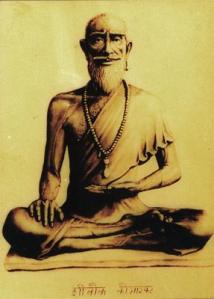Traditional Thai massage
Traditional Thai Massage[edit | edit source]
Traditional Thai massage, also known as Nuad Thai or Nuad Boran, is an ancient healing system that combines acupressure, Indian Ayurvedic principles, and assisted yoga postures. The practice is rooted in the Indian healing traditions and has been influenced by the traditional medicine systems of China and Southeast Asia.
History[edit | edit source]
The origins of Traditional Thai massage are believed to date back over 2,500 years, attributed to Jivaka Kumar Bhaccha, a physician from India who is said to have treated the Buddha. This form of massage was brought to Thailand along with Buddhism and has evolved over centuries, incorporating elements from neighboring cultures.
Techniques[edit | edit source]
Traditional Thai massage is distinct from other forms of massage in that it does not use oils or lotions, and the recipient remains clothed during a treatment. The massage is performed on a mat on the floor rather than on a table. Practitioners use their hands, elbows, knees, and feet to apply pressure and manipulate the body into various positions.
The massage typically involves a sequence of movements that are intended to stretch the body, increase flexibility, and relieve tension. It is often described as "passive yoga" because the therapist moves the client's body into yoga-like positions.
Benefits[edit | edit source]
Traditional Thai massage is believed to have numerous health benefits, including:
- Improved circulation
- Enhanced flexibility
- Relief from muscle and joint tension
- Increased energy levels
- Promotion of relaxation and stress reduction
Practice and Training[edit | edit source]
In Thailand, Traditional Thai massage is a respected and regulated profession. Practitioners undergo extensive training, often at renowned institutions such as the Wat Pho temple in Bangkok, which is considered the birthplace of Thai massage.
Cultural Significance[edit | edit source]
Traditional Thai massage is an integral part of Thai culture and is often practiced in conjunction with other traditional healing arts. It is not only a therapeutic practice but also a spiritual one, with practitioners often beginning sessions with a prayer or meditation to center themselves and focus their intentions.
Related Pages[edit | edit source]
See Also[edit | edit source]
Search WikiMD
Ad.Tired of being Overweight? Try W8MD's physician weight loss program.
Semaglutide (Ozempic / Wegovy and Tirzepatide (Mounjaro / Zepbound) available.
Advertise on WikiMD
|
WikiMD's Wellness Encyclopedia |
| Let Food Be Thy Medicine Medicine Thy Food - Hippocrates |
Translate this page: - East Asian
中文,
日本,
한국어,
South Asian
हिन्दी,
தமிழ்,
తెలుగు,
Urdu,
ಕನ್ನಡ,
Southeast Asian
Indonesian,
Vietnamese,
Thai,
မြန်မာဘာသာ,
বাংলা
European
español,
Deutsch,
français,
Greek,
português do Brasil,
polski,
română,
русский,
Nederlands,
norsk,
svenska,
suomi,
Italian
Middle Eastern & African
عربى,
Turkish,
Persian,
Hebrew,
Afrikaans,
isiZulu,
Kiswahili,
Other
Bulgarian,
Hungarian,
Czech,
Swedish,
മലയാളം,
मराठी,
ਪੰਜਾਬੀ,
ગુજરાતી,
Portuguese,
Ukrainian
Medical Disclaimer: WikiMD is not a substitute for professional medical advice. The information on WikiMD is provided as an information resource only, may be incorrect, outdated or misleading, and is not to be used or relied on for any diagnostic or treatment purposes. Please consult your health care provider before making any healthcare decisions or for guidance about a specific medical condition. WikiMD expressly disclaims responsibility, and shall have no liability, for any damages, loss, injury, or liability whatsoever suffered as a result of your reliance on the information contained in this site. By visiting this site you agree to the foregoing terms and conditions, which may from time to time be changed or supplemented by WikiMD. If you do not agree to the foregoing terms and conditions, you should not enter or use this site. See full disclaimer.
Credits:Most images are courtesy of Wikimedia commons, and templates, categories Wikipedia, licensed under CC BY SA or similar.
Contributors: Prab R. Tumpati, MD



